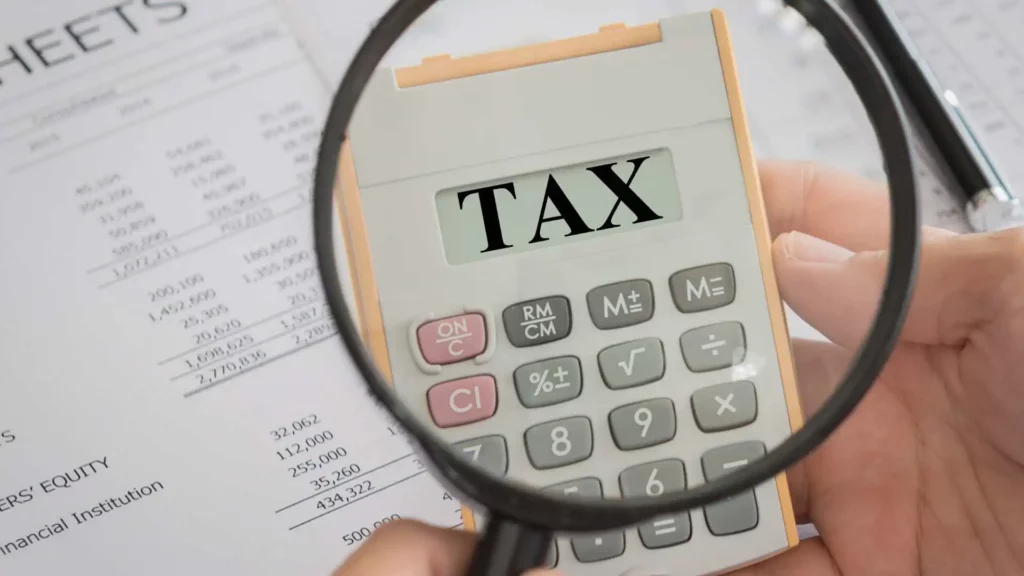As a US resident, tax filing can be daunting, especially when it involves complex calculations for your withholding allowance. However, if you are stepping into a new phase in your life, like a new job or marriage or welcoming a little angel to your family, it is wise to review your W-4 withholdings. Your tax refunds or whatever you may owe at tax time is directly affected by the amount you withhold; therefore, understanding what withholding allowance is essential and how it works is essential. Check out Beem to resolve all your tax-filing queries and be prepared for the 2024 tax season.
What is Withholding Allowance?
You may encounter the concept of tax withholding when you start a new job. Your employer may add a W-4 form to the other IRS forms for you to fill. This W-4 form collects your information to get the correct tax amount to withhold from your salary. The withholding tax varies from person to person. It is based on certain factors like your marital status, earnings, and job type, whether you are married or single, if your wages from a second job or your spouse’s job are $1,500 or less, and if you are filing taxes as the Head of your family.
How Withholding Allowance Works
Each employee uses IRS Form W-4 to determine their withholding allowances, which is why businesses are advised to obtain W-4 forms from new employees despite the IRS not collecting this form. The recent version of Form W-4 has been simplified, reducing the number of sections from seven to five in response to the Tax Cuts and Jobs Act, which eliminated personal or dependency allowances while retaining others.
Calculating Withholding Allowances
The IRS has simplified the W-4 form and how taxpayers calculate their withholding, focusing on multiple jobs, spousal employment, tax credits and other adjustments.
Once employees determine their withholding allowances, employers calculate the total amount to withhold from their paychecks. They consider factors like federal income taxes, flat-rate Medicare and Social Security taxes and any applicable wage garnishments and benefit premium payments.
The wage bracket method can be used to calculate federal income tax withholding, involving steps such as comparing total taxable wages to amounts specified in the W-4, dividing and subtracting to determine the adjusted wage amount and adding and subtracting to arrive at the federal income tax to withhold.
Payroll software can accurately determine federal income tax withholding, either through the software’s withholding calculator or by double-checking the math using the percentage method.
Impact of Withholding Allowances on Take-Home Pay
Introduced in 2020, withholding allowances no longer feature on the current W-4 form. Before this change, the number of allowances claimed could influence the income tax withheld from an employee’s paycheck.
If you claim more allowances, you may end up with less income tax being withheld, ultimately leading to a more effective take-home pay. But it would help if you remember that claiming too many allowances could lead to tax underpayment, and you will have a hefty tax bill at the end of the year.
Recently, the focus has shifted from withholding allowances to other factors, such as tax credits, deductions, and filing status, which greatly impact an employee’s tax liability. The IRS has provided a Withholding Calculator to help you determine the appropriate withholding amount.
Exemption from the Withholding Allowance
Claiming withholding exemption can be complicated, but it’s possible under certain conditions. You can claim exemption only if you had a right to refund all federal income tax withheld in the prior year because you didn’t have any tax liability and expect the same for the current year. To claim exemption, simply write “Exempt” on Form W-4. However, this exemption must be declared annually and doesn’t automatically carry over to the following year.
What If You Claim Too Many Allowances?
Claiming too many allowances on your W-4 form may lead to tax underpayment and a potential tax bill at the end of the year. If you claim more allowances than you qualify, you might owe the IRS money when filing your tax return. Ensuring the correct deductions are claimed is crucial to avoid overpaying or underpaying taxes. The IRS Withholding Calculator is a valuable tool for determining the appropriate withholding amount. Significant life events like marriage, the birth of a child, or a spouse losing a job can prompt adjustments to the withholding amount.
How much withholding allowance should I claim?
Determining whether to withhold less money for taxes or err on the side of overpayment can pose a dilemma, as both approaches have drawbacks. The optimal choice is to accurately complete Form W-4 to avoid unexpected tax bills and avoid providing the IRS with an interest-free loan.
The updated W-4, implemented by the IRS in 2020, no longer incorporates withholding allowances or related concepts. Despite this change, there are still methods to adjust tax withholding on your return. Our W-4 calculator walks you through this process and generates a completed form for your employer. Employers can consult IRS publication 15-T to ascertain federal income tax withholding for employees.
Under the previous tax law, failing to submit a W-4 resulted in employers withholding taxes at the highest rate, assuming the individual is single with zero allowances.
How do you determine withholding allowances?
The amount withheld from an employee’s paycheck depends on three main factors:
- The amount of income earned
- The employee’s filing status (either single or married filing jointly)
- The number of withholding allowances claimed
Each allowance claimed reduces the amount withheld, while the employee can request an additional withholding. However, employees cannot solely determine a dollar amount of withholding; they must specify a filing status and the number of withholding allowances on Form W-4. The withholding amount generally depends on a taxpayer’s filing status, number of jobs, other income, and dependents.
Conclusion
It’s crucial to ensure that the correct amount of money is withheld from each paycheck to cover federal income taxes. Employees who don’t complete Form W-4 accurately may face an unexpected tax bill or provide the IRS with an interest-free loan. Check out Beem Tax Calculator to get a quick and accurate estimate of your federal and state tax refund for free.
FAQs
What should I put for withholding allowances?
Adjust W-4 allowances based on personal preference: more allowances for a larger paycheck, fewer for larger refunds.
Is it better to claim 1 or 2 allowances?
Choose one allowance for more tax withheld or 2 for a larger paycheck; consult a tax professional for personalized advice.
Do more allowances mean more withholding?
No, more allowances generally result in less withholding, leading to a larger paycheck.
Will I owe money if I claim 2 allowances?
Claiming two allowances may result in less tax withheld, potentially leading to owing money at tax time.






























